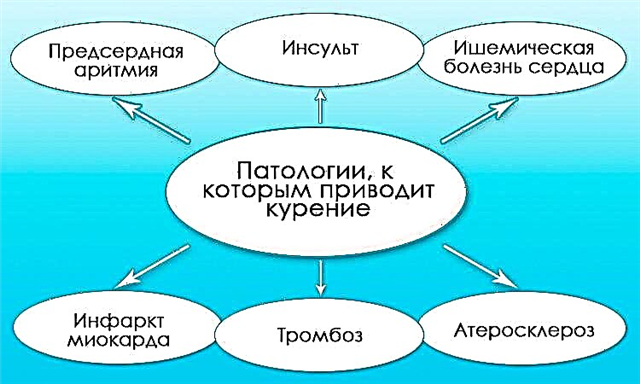Inflammation in the nasopharynx is an extremely unpleasant condition that can knock a person out of their working rut for a long time. It is not surprising that each of us wants to quickly get rid of the disease. For this, we are ready to use any alternative means of treatment, which, of course, will not harm overall health. Salty "shower" for the nose has been used for a long time. This is a time-tested, safe and effective medicine in the fight against colds. So both adults and children can safely use this recipe.
Washing the sinuses with water and edible salt does not exclude the traditional treatment of colds, but significantly speeds up and facilitates the healing process
When to rinse your nose?
 For infectious inflammation of the ENT organs: sinusitis, frontal sinusitis, sinusitis, etmoditis, tonsillitis, chronic tonsillitis, influenza, respiratory infections. The tool helps to partially or completely get rid of adenoids in children, significantly alleviates acute allergic reactions, reduces the risk of developing allergies, and prevents the occurrence of infectious diseases of the upper respiratory tract.
For infectious inflammation of the ENT organs: sinusitis, frontal sinusitis, sinusitis, etmoditis, tonsillitis, chronic tonsillitis, influenza, respiratory infections. The tool helps to partially or completely get rid of adenoids in children, significantly alleviates acute allergic reactions, reduces the risk of developing allergies, and prevents the occurrence of infectious diseases of the upper respiratory tract.
Rinsing the nose with saline solution at home copes well with rhinitis of any origin: allergic, vasomotor, hypertrophic, atrophic. Such a "shower" is used in surgical practice to alleviate the condition, for example, before and after septoplasty (surgery to correct the nasal septum).
What is the procedure for?
Under the influence of pathogenic bacteria or viruses, swelling and swelling of the nasal mucosa occurs, the mucus thickens, a runny nose begins, which most often passes in combination with inflammation of the nasopharynx. Without treatment, inflammation can spread to the larynx and ears, leading to acute laryngitis and otitis media.
Washing the nose with saline at home early in the illness prevents viruses or bacteria from spreading into the airways and minimizes the risk of pathogens entering the larynx and ears
Contraindications
Severe defects of the nasal septum (for example, curvature), benign and malignant tumors of the nasopharynx, complete obstruction of the nasal passages, a predisposition to bleeding do not allow the procedure to be performed. Also, with otitis media, the medicine can leak into the sore ear, which will lead to serious consequences of otitis media. Individual intolerance to the components of the medicinal composition cannot be ruled out. All of these contraindications are relative. The possibility of using a remedy should be discussed with the attending physician.
Pregnant women and newborns are allowed to carry out the procedure, provided that there are no general contraindications.
What does a salt shower give?
- disinfection of the mucous membrane;
- barrier to the spread of microbes;
- cleansing the sinuses;
- reduction of swelling and the amount of mucus;
- improvement and restoration of nasal breathing;
- removal of pollen and other small irritants from the surface of the mucous membrane;
- reducing the risk of developing an allergic reaction;
- strengthening of capillaries;
- increased local immunity;
- prevention of recurrence of chronic inflammatory processes;
- significant acceleration of recovery;
- a significant increase in the therapeutic effect of traditional medicines. If the nose is clogged with mucus and pus, then the spray, drops or ointment will settle on the mucus and come out with it, without having the desired effect. Often this explains the lack of results from the use of nasal preparations. Not because they are not effective, but because medicinal substances do not settle on the mucous membrane, where viruses and bacteria "wield".
How to prepare saline solution?
 To do this, you will need 250 ml of warm boiled water, table salt from two grams for children to three grams for adults, baking soda on the tip of a teaspoon, iodine 1 drop for children over four years old, 2 drops for adults.
To do this, you will need 250 ml of warm boiled water, table salt from two grams for children to three grams for adults, baking soda on the tip of a teaspoon, iodine 1 drop for children over four years old, 2 drops for adults.
Take a thoroughly washed dish, combine all the components in it, stir well until the salt is completely dissolved. If any undissolved substances remain, strain the composition through cheesecloth.
Separately, it must be said about water. It should be warm and comfortable. If the water is too hot, it can burn the mucous membrane, cold water will cause irritation. Do not take water from the tap. It contains pathogenic microbes that can join in and worsen inflammation. The water must be boiled and cooled to a comfortable temperature.
Washing technique
How to rinse your nose with saline:
1. To perform the procedure, you need devices: a syringe, a syringe without a needle, a teapot with a thin nose, a special watering can, for children under four to five years old - a pipette.
For babies, use only a pipette! Any other device can damage the delicate mucous membrane of the child.
2. Method for adults: standing over the sink, tilt your head to the side, gently pour the product into the nostril that will be higher. That is, tilt your head to one side, flush the nostril from the opposite side. The solution will flow out of the other nostril and partially enter the mouth. What gets into the mouth should be spit out. Then repeat the same steps with the other nostril, tilting your head to the other side.
3. Alternatively, you can use an ordinary saucer or hands. Pour the solution into a saucer or scoop it up with the palm of your hand. Suck the medicine in one nostril then the other. You pull in one nostril, the other is closed. You can drain the water through the mouth, but the pulling force must be strong to flush out all the sinuses. Or, as in the previous case, you can draw in water with your nostril with your head bowed. In this case, the agent will flow out through the second nasal passage.
4.  The method for infants and children under five years old is fundamentally different from the treatment of adults. Small patients are not able to control the process, so a pipette is used for them. It is necessary to drip two or three drops into each nasal passage with a pipette. In this case, the child lies on his back. After a few minutes, the crusts will become soaked, then they can be removed with cotton swabs.
The method for infants and children under five years old is fundamentally different from the treatment of adults. Small patients are not able to control the process, so a pipette is used for them. It is necessary to drip two or three drops into each nasal passage with a pipette. In this case, the child lies on his back. After a few minutes, the crusts will become soaked, then they can be removed with cotton swabs.
If the child can already sit down, then after instillation it must be planted so that the solution flows freely. Next, just wipe your nose with cotton wool.
It is important to thoroughly rinse all the sinuses, otherwise the therapeutic effect of the procedure will be very weak
Stay out of the cold for two to three hours immediately after irrigation, as your sinuses may chill even further. In summer, you can go out after half an hour or an hour. This is very important in order to achieve a good healing effect.
How often can you rinse your nose with saline?
Depends on the problem to be solved. Acute inflammatory processes must be treated in this way at least four times a day for one and a half weeks, but not more than two weeks. As a preventive measure, two procedures per week will be sufficient. For hygienic purposes, irrigate once a week to remove and thin mucus. Cleanse yourself regularly if you have chronic infections.
As you can see from the article, saline nasal solution at home is very easy to prepare. It does not require spending money, and the procedure itself, although not very pleasant, is extremely effective and safe. We can say that flushing the nasal sinuses is an operative aid for rhinitis and other inflammatory processes of the nasopharynx.



